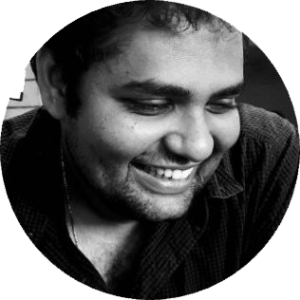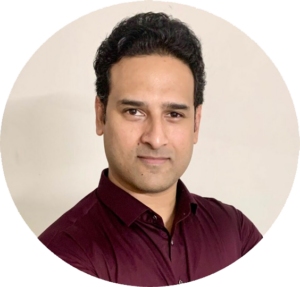Scientists typically do their most creative work before the age of forty. It is commonly thought that this happens because aging by itself brings about a loss of creative capacity. However, studies show that of scientists who produce highly creative work beyond the age of forty, a disproportionately large number entered their field at an older age than is usual. Since by the age of forty the large majority of scientists have been working in their field for at least fifteen years, the studies’ finding strongly suggests that the real reason why scientists over forty rarely produce highly creative work is not that they have aged but rather that scientists over forty have generally spent too long in their field.
In the argument given, the two portions in boldface play which of the following roles?
(A) The first is a claim, the accuracy of which is at issue in the argument; the second is a conclusion drawn on the basis of that claim.
(B) The first is an objection that has been raised against a position defended in the argument; the second is that position.
(C) The first is evidence that has been used to support an explanation that the argument challenges; the second is that explanation.
(D) The first is evidence that has been used to support an explanation that the argument challenges; the second is a competing explanation that the argument favors.
(E) The first provides evidence to support an explanation that the argument favors; the second is that explanation.
Solution
Passage Analysis
| Scientists typically do their most creative work before the age of forty. | The first sentence of the argument is a factual statement that gives us some background information. It says that scientists typically do their most creative work before they reach the age of forty. |
| It is commonly thought that this happens because aging by itself brings about a loss of creative capacity. | This statement gives us the common explanation for why scientists do their most creative work before forty. The common belief is that since aging by itself results in a decrease in creative capacity, scientists typically do their best work before the age of forty.So, this statement gives us an opinion. It is a common belief that aging by itself brings about a loss of creative capacity. |
| However, studies show that of scientists who produce highly creative work beyond the age of forty, a disproportionately large number entered their field at an older age than is usual. | This statement starts with the contrast word ‘however’, which signals that the content of the statement is going to contradict the opinion stated in the previous sentence.‘Studies show’ – so this statement is a fact, since anything that is the result of a study gives us some factual information. According to the studies that the author refers to, a large number of scientists who do produce highly creative work after the age of forty entered their field at an age that is older than the usual age at which scientists enter their fields.Note that this fact strongly indicates a contrast to the opinion stated in the previous sentence. According to common belief, aging by itself brings about a loss in creativity. But the findings of the studies show that the age at which a scientist enters his or her field could be a factor in the amount of creative work done by a scientist. |
| Since by the age of forty the large majority of scientists have been working in their field for at least fifteen years, the studies’ finding strongly suggests that the real reason why scientists over forty rarely produce highly creative work is not that they have aged but rather that scientists over forty have generally spent too long in their field. | This sentence starts with ‘since’, so it’s giving us a reason and a conclusion . ‘Since’ gives the reason and the latter half of the sentence gives the conclusion. Here, the author says that the large majority of scientists have been in their field for at least fifteen years by the time they reach forty. This has led to something: it has led to a loss of their creativity because they have been in their field for too long.So, the author’s conclusion here is that aging is not responsible for a loss of creativity in scientists. Rather, the reason for their loss of creativity is that they have spent too long working in their field. This part is the author’s conclusion. The author directly contradicts the common belief by saying that ‘the real reason’ is not the commonly believed one. |
Loved the solution? Take a free trial to get unlimited access to concept files, live sessions, and practice questions. For any strategic advice for GMAT or MBA Admissions, write to us at acethegmat@e-gmat.com. We are the most reviewed GMAT prep company on GMATClub with more than 2400+ reviews
Pre-thinking
Looking at the logical structure of the argument and the function of each statement, we can prethink the roles of the two statements in boldface.
In prethinking for boldface questions, keep in mind that we need to identify the relationship between the two highlighted parts, as well as the relationship that each of them has with the rest of the argument.
So let’s summarise our understanding of the passage. First, the author gives a common belief. Then, the author provides evidence that refutes the common belief. Finally, the author arrives at a conclusion that is opposed to the common belief.
The first part in boldface, as identified in the passage analysis, is a fact. The author’s conclusion is based on this fact.
The second part in boldface is part of the author’s conclusion that contradicts the common belief presented earlier in the passage. In this part, the author identifies the real reason for the fact that scientists do their most creative work before the age of forty.
Analysis of Option Statements
| A. The first is a claim, the accuracy of which is at issue in the argument; the second is a conclusion drawn on the basis of that claim. | This option is incorrect.Let’s understand this.First of all, the first statement is a fact, not a claim. Also, the argument does not challenge the accuracy of this statement. This statement supports the author’s conclusion.The second half of this statement is also incorrect since it identifies BF2 as a conclusion. BF2 is part of the author’s conclusion, not the entire conclusion. |
| B. The first is an objection that has been raised against a position defended in the argument; the second is that position. | This option is incorrect.First of all, BF1 cannot be an objection to the author’s position, since the author’s position is based on BF1.Second, “position defended in the argument means” could mean a conclusion. However, Bf2 is not a conclusion; it is only a part of a conclusion. |
| C. The first is evidence that has been used to support an explanation that the argument challenges; the second is that explanation. | This option is incorrect.Let’s see why. ‘The first is evidence’—this part is correct. But the first is evidence that supports the author’s conclusion, not the conclusion that the author challenges.Also, the second is the author’s explanation, not the explanation that the author challenges. |
| D. The first is evidence that has been used to support an explanation that the argument challenges; the second is a competing explanation that the argument favors. | This choice is also incorrect.The first part of this choice is the same as the first part of choice C, and is incorrect for the same reasons.In this option, the second half has no error. BF2 is indeed a competing explanation that the argument favors. So, the only error in this choice is the part that says that BF1 supports the explanation that the author challenges. |
| E. The first provides evidence to support an explanation that the argument favors; the second is that explanation. | This is the correct answer. The first is evidence since it is a fact. This choice correctly says that BF1 supports the explanation that the author favors. The second half is also correct in saying that BF2 is the explanation favored by the author. |
Loved the solution? Take a free trial to get unlimited access to concept files, live sessions, and practice questions. For any strategic advice for GMAT or MBA Admissions, write to us at acethegmat@e-gmat.com. We are the most reviewed GMAT prep company on GMATClub with more than 2400+ reviews











